#lourinha
Explore tagged Tumblr posts
Text
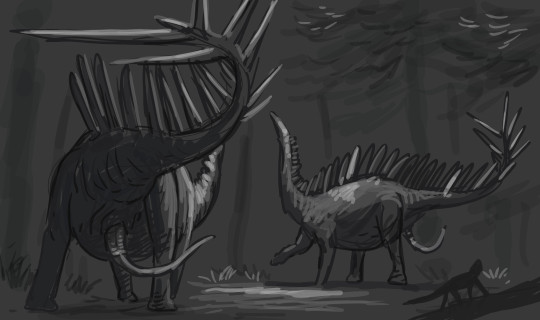
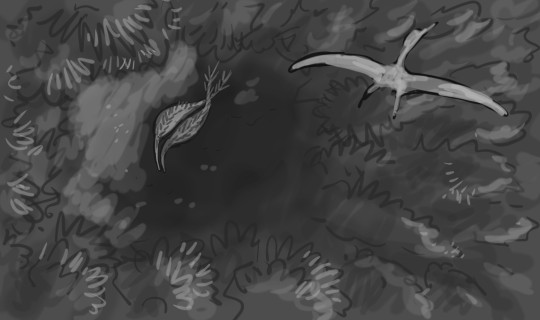
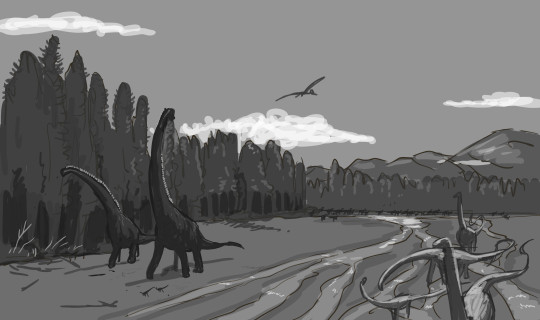
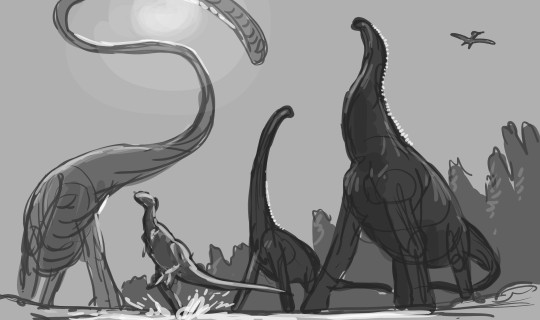
Second #JurassicJune post!
Oops, turns out they were both male, but Miragaia doesn't seem to mind. We continue our journey over the lands of the Lourinhã Formation, with some Lusotitan and Dinheirosaurus/Supersaurus patrolling the floodplains. A Draconyx herd in the background.
#sciart#paleoart#paleostream#palaeoblr#dinosaur#dinosaurs#jurassic#stegosaur#lourinha#portugal#jurassicjune#pride month
272 notes
·
View notes
Text

The Mists of Lourinhã Eousdryosaurus encounters Lusotitan.
#my art#paleoart#sciart#dinosaur#lusotitan#eousdryosaurus#sauropod#ornithopod#herbivore#lourinha formation#portugal#jurassic#mesozoic#extinct#animal#nature#prehistoric
387 notes
·
View notes
Text

Ceratosaurus and allosaurus heads, as a little experiment... Sizes aren't up to scale, just wanted to color and edit a sketch of mine digitally.
#paleo#prehistory#dinosaurs#dinosaur art#dinosaur illustration#dinosaur reconstruction#theropoda#theropod#paleobr#paleoart#paleomedia#ceratosaurus#allosaurus#jurassic period#morrison formation#lourinha formation
68 notes
·
View notes
Text
SISTER FORMATIONS: MORRISON, LOURINHA AND TENDAGURU
Back in the Late Jurassic Period, North America, Europe and Africa were next door neighbors.

This is reflected in the similarity of the lithology, and fauna of the rocks. In North America, we have the Morrison Formation, in Europe we have the Lourinha Formation, and in Africa we have the Tendaguru Formation. All of these are contemporaneous or sister formations.
Stratigraphy
The Tendaguru Formation is approximately 177 m thick and broken up into five members: Lower Dinosaur Member (cross-bedded, fine-grained sand and siltstone w/interbedded clay), Nerinella Member (trough cross-bedded and massive sandstone indicating a tidal channels, sandbars and beaches),

Middle Dinosaur Member ( ripple, cross-bedded, fine-grained calcareous sandstone and siltstone and massive to crudely bedded siltstone and claystone indicating tidal flats and lagoons),
Indotrigonia Africana Member (calcite cemented sandstone, conglomerate, thin claystone, and siltstone with sandy limestone indicating tidal and deltaic channels),
and the Upper Dinosaur Member (ripple, cross-bedded, fine-grained sandstone and siltstone with interbedded claystone and micriitic carbonates indicating tidal flats).
The Lourinha Formation is about 200 to 1000 meters thick and is broken into about 5 members: Praia da Amoreira Member (massive mudstone with meter thick sandstone lenses and calcrete layers indicating a meandering river system),
the Porto Novo Member (cross-bedded sandstone indicating a deltaic system), the Praia Azul Member (marl and mudstone indicating brief marine transgression),
and the Santa Rita and Assenta Members (mudstone, caliche, shelly carbonates near the top indicating a landward side of a deltaic system) which are equivalent members from different basins.
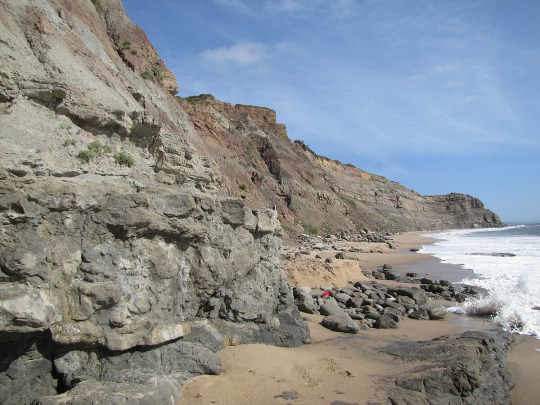
The Morrison, as stated previously, is about 200 m thick and consists of 11 different members. I will not go into detail about them again but it should be noted that the formations are approximately the same thickness and made of primarily sand, silt and mudstone.
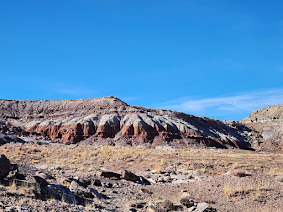
DINOSAURS
Now for the other fun part: the dinosaur fauna. There are some dinosaurs that are shared between two or all of the formations. These include Ceratosaurus nasicornis in the Morrison and a possible Ceratosaurus in the Tendaguru
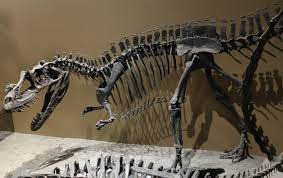
and in the Lourinha, Torvosaurus tanneri in the Morrison, Torvosaurus gurneyi in the Lourinha, and a possible Torvosaurus species in the Tendaguru,
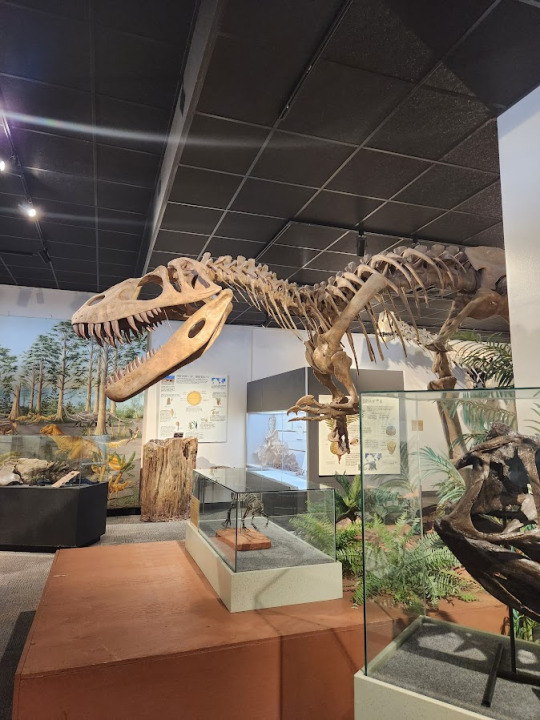
Allosaurus fragilis in the Morrison and Allosaurus europaeus in the Lourinha,

Dryosaurus altus in the Morrison and a possible Dryosaurus species in the Lourinha,

Miragaia longicollum in the Lourinha and possibly Miragaia longispinus in the Morrison. Though if that's true, the genus would be Alcovosaurus because that was named first.

And then there are the dinosaurs that were similar to each other in each formation. Filling in the niche or living alongside Dryosaurus was Dystalotosaurus of the Tendaguru,
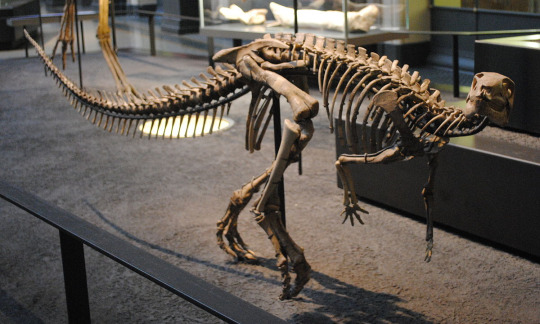
Eudryosaurus in the Lourinha, and Nanosaurus in the Morrison.
There's Draconyx in the Lourinha and Camptosaurus in the Morrison as early iguanodonts.

Kentrosaurus in the Tendaguru, Dacentrurus in the Lourinha and Stegosaurus and Hesperosaurus in the Morrison are the main stegosaurs.
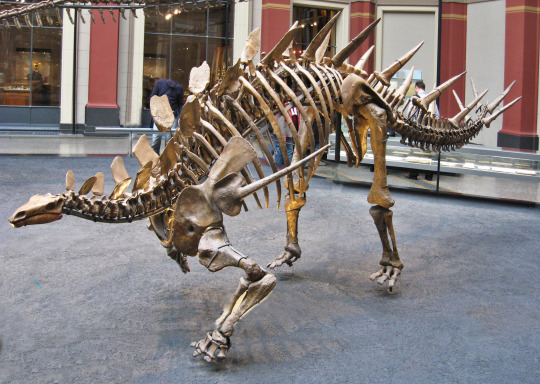
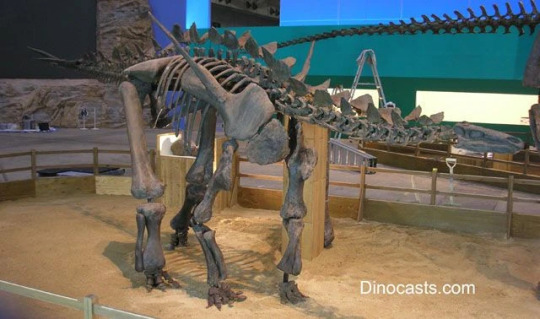

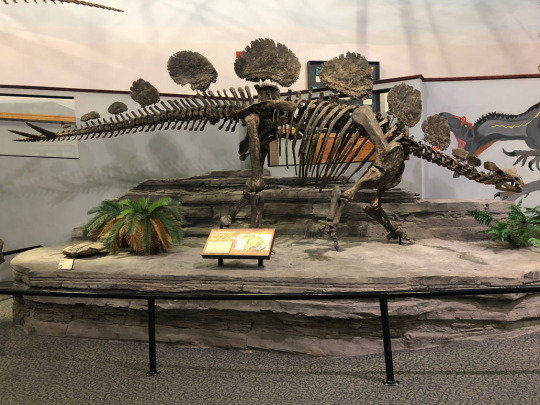
For ankylosaurs, there is Dracopelta in the Lourinha and Mymooropelta and Gargoyleosaurus in the Morrison.

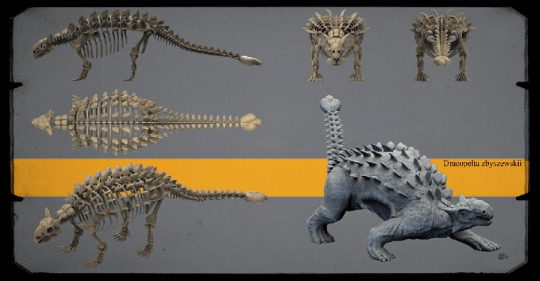
Then there's Dicraeosaurus of the Tendaguru and Suuwassea of the Morrison.

Giraffatitan of the Tendaguru, Lusotitan of the Lourinha and Brachiosaurus of the Morrison all represent brachiosaurs.
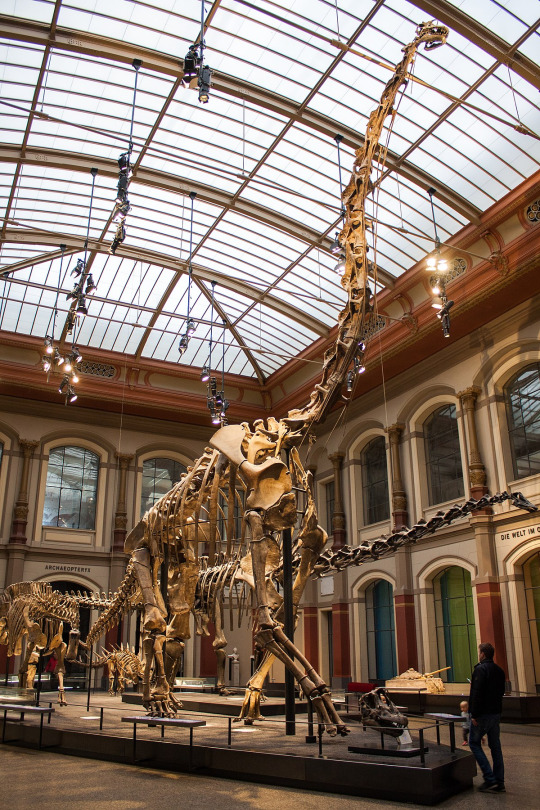
Janenschia of the Tendaguru and Haplocanthosaurus of the Morrison represent early sauropods.
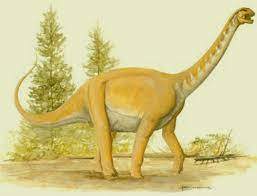
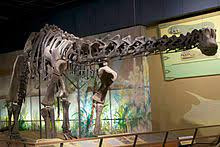
Tendaguria of the Tendaguru and Zby of the Lourinha are even earlier sauropods.
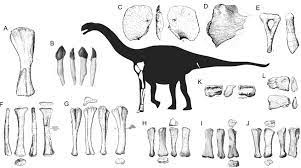
Torneiria of the Tendaguru and Deinheirosaurus of the Lourinha are the diplodocids that match up with the bagillion in the Morrison.
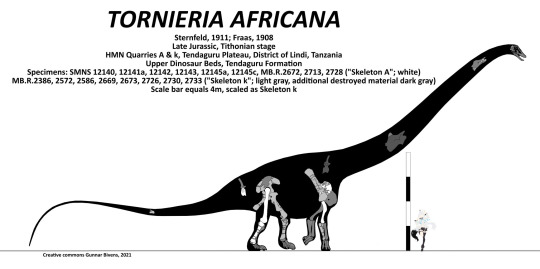
Lourinhasaurus is the camarasaurid representative of the Lourinha.
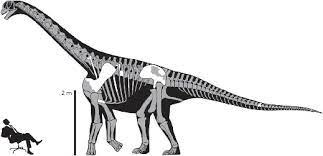
The Tendaguru and the Lourinha have early carcharadontosaurs in the forms of Veteruristisaurus and Lusovenator.
Lourinanosaurus is the European equivalent of Marshosaurus in the U.S.

And Elaphrosaurus of the Tendaguru is the small to medium-sized equivalent of Tanycoalgreus in the Morrison.
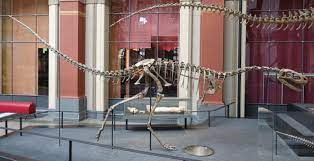

This was a ton of info so if you want it more broken down, message me! I am happy to walk you through it all! Enjoy your weekend!
#paleontology#dinosaur#fossils#geology#lithology#north america#europe#africa#morrison formation#lourinha formation#tendaguru formation#science#allosaurus#torvosaurus#ceratosaurus#stegosaurus#brachiosaurus#giraffatitan#miragaia#kentrosaurus#dacentrurus#mymooropelta#dracopelta#gargoyleosaurus#dryosaurus#sandstone#mudstone#limestone#siltstone#stratigraphy
143 notes
·
View notes
Text
Ophiussasuchus: The Lourinhã Goniopholid
Not even a full three weeks into 2024 and we already have three new pseudosuchians, personally, I'm pretty satisfied with this developement.
The newest one is Ophiussasuchus paimogonectes ("crocodile from Portugal that swims at Paimogo beach"), a goniopholid Neosuchian from the Late Jurassic Lourinhã Formation of Portugal.
Ophiussasuchus is known from a single specimen, but one thats quite complete, preserving almost the entirety of the skull in 3D and only missing a chunk of the right side of the end of the skull.


The skull of Ophiussasuchus is mesorostine and platyrostral. In simple terms, its of medium length and width and has a flattened skull. Platyrostry is pretty much the standard for goniopholids, but mesorostry is more noticable in that there are some other genera in the group with short snouts (like Nannosuchus) and long snouts (like Anteopthalmosuchus and Hulkepholis). Another more general feature of this animal is that it was a medium-sized member of its family, with estimates suggesting a length of somewhere between 2.5 to 3 meters.
As often the case, the devil lies in the detail. Ophiussasuchus is thought to have been most closely related to Hulkepholis and Anteophthalmosuchus, two goniopholids from the Early Cretaceous of Europe. However it displays several features that indicate an intermediate position. A nasopharyngeal duct is visible on the palate, but in its closest relatives the duct is enclosed and in the more basal American forms the duct is more open. Interestingly, the palate also features small palatal fenestrae, which are not seen in any other goniopholids aside from Siamosuchus. Interestingly, these two features are not just leftovers from its ancestry. Analysis suggest that the palate of the ancestor of Ophiussasuchus likely looked like that of the other European taxa, which in turn means that this anatomy was reversed in Ophiussasuchus. It's unclear if Ophiussasuchus simply lost that anatomy or if it actually converged with the more basal forms.
Anteophthalmosuchus and Hulkepholis, longirostrine relatives of Ophiussasuchus from the early Cretaceous. Figure from Arribas et al. 2019

Ophiussasuchus lived during the Late Jurassic (Kimmeridgian to Tithonian) in the Lourinhã Formation of Portugal. The Lourinha is perhaps most famous as "Europe's Morrison", sharing much fauna with its American counterpart. Just as an example both formations feature Allosaruus, Torvosaurus and some animals found in the Lourinhã Formation are at the very least related to American forms. Examples for the latter are Lusotitan and Brachiosaurus, Dinheirosaurus and Supersaurus as well as Miragaia and Alcovasaurus.
Goniopholids are also present in both formations, the Morrison featuring Amphicotylus, Eutretauranosuchus and Diplosaurus and Lourinhã being home to Ophiussasuchus.
Reconstruction below by Simão Mateus and Camilo Pineda
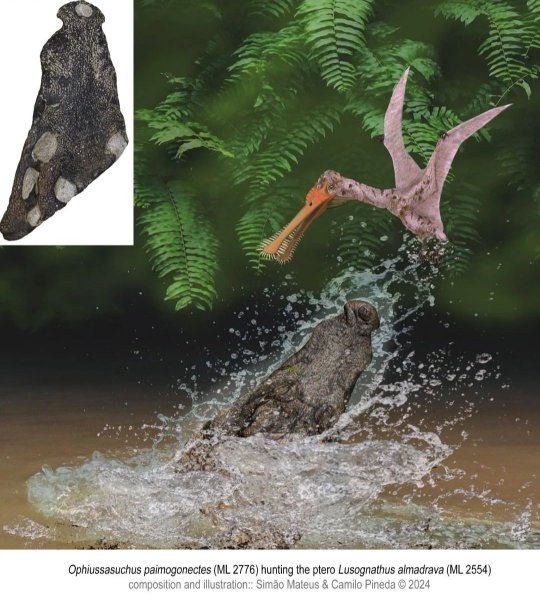
Obligatory wikipedia and paper links
Ophiussasuchus - Wikipedia
A new Portuguese goniopholidid (palaeo-electronica.org)
#Lourinhã Formation#goniopholidae#pseudosuchia#croc#crocodile#ophiussasuchus#prehistory#jurassic#portugal#paleontology#palaeoblr#long post
33 notes
·
View notes
Text
Típica moradia rústica T3 remodelada no centro da Marteleira - Lourinhã
- 3 Quarto
- 2 Casas de banho
- 124 m2 de área
Moradia composta por:
Rés-do-chão
- Uma sala com janelas de canto onde entra muita luz natural;
- Cozinha com placa e forno eléctrico e esquentador inteligente, porta com acesso à rua;
- W.c. social;
- Quarto
- Hall com escadas de acesso ao 1º andar;
Primeiro andar:
- Sala com acesso ao terraço;
- Quarto com janela;
- Casa-de-banho com banheira e janela;
- Terraço com Churrasqueira com vista para a serra
- Possui fibra
A 5 minutos de carro do centro da Lourinhã, esta freguesia também está encostada a Torres Vedras, tornando-se uma opção para quem procura casa nessa localidade.
Acessos:
A8 e N8 - a 69 kms de Lisboa, demorando em média 40 minutos a chegar à capital.
Da freguesia da Marteleira ainda dispõe deautocarro directo para Lisboa e outros que dão para as mais variadas localizações.
124 900 €
Para mais informações ou para agendar uma visita, contacte-me
Pedro Ribeiro
☎️ 914 542 212
Tratamos do seu processo de crédito, apresentando as melhores soluções para si junto dos bancos através de intermediação de crédito vinculado e certificado pelo Banco de Portugal com o Registo número: 6722
Certezas e Conceitos Unipessoal Lda.
Licença AMI 19009|
Cada Agência é jurídica e financeiramente independente
https://www.mysitec21.com/c21pt/pedro-ribeiro/pt-PT/propriedades-para-venda/propriedade/Tipica-moradia-rustica-T3-remodelada-no-centro-da-Marteleira---Lourinha--Lourinha-Miragaia-e-Marteleira-Cabeca-Gorda-Marteleira/2512486
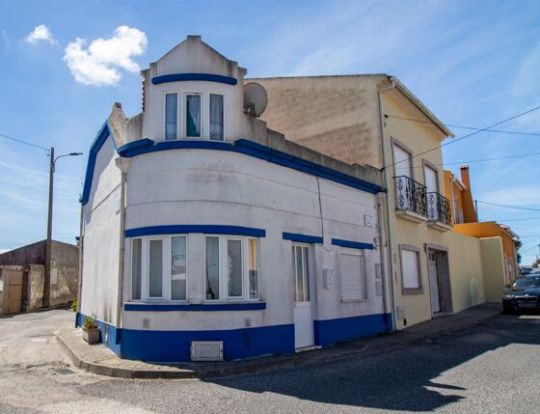
10 notes
·
View notes
Text
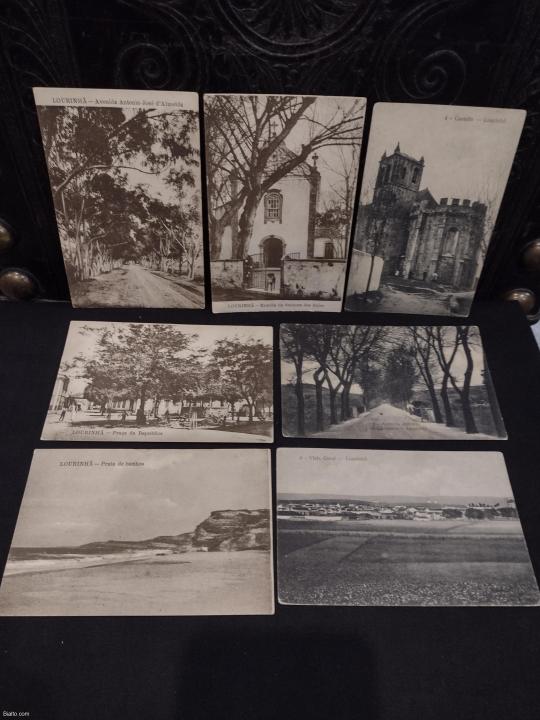
Bilhete Postal Lourinhã 7 unidades https://www.bialto.com/listing/bilhete-postal-lourinha-7-unidades/18411266
2 notes
·
View notes
Text
Homem de 77 anos morre afogado na praia do Porto das Barcas na Lourinhã
Um homem de 77 anos morreu depois de alegadamente se ter sentido mal ao entrar na água na praia do Porto das Barcas, concelho da Lourinha, distrito de Lisboa, divulgou a Autoridade Marítima Nacional (AMN).

O alerta para o incidente foi dado pelas 15h07 de ontem, para uma pessoa em dificuldades na água, adiantou a AMN em comunicado.
“O corpo foi retirado da água por populares que se encontravam no local, que iniciaram prontamente as manobras de reanimação, até à chegada dos elementos dos Bombeiros Voluntários e do INEM”, referiu ainda, acrescentando que não foi possível reverter a situação, tendo sido o óbito declarado no local.
Para a ocorrência foram ativados elementos da Estação Salva-vidas de Peniche e do comando-local da Polícia Marítima de Peniche, os Bombeiros Voluntários da Lourinhã, o INEM e a GNR.
O comando-local da Polícia Marítima de Peniche tomou conta da ocorrência, destacou ainda a AMN.
0 notes
Photo
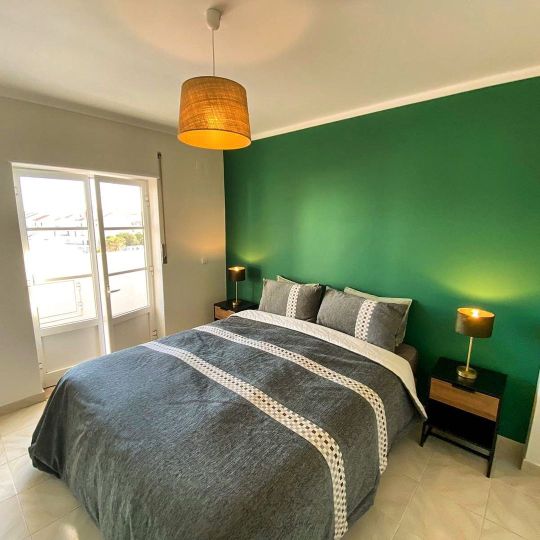
Quarto verde #quarto #verde #ferias #holiday #holidays #portugal🇵🇹 #silvercoast #lourinhã #lourinha #praiadaareiabranca #surf #holidayhome #atlanticocean #atlantic #surfing #areiabranca #airbnb #greenroom #visitportugal (hier: Praia da Areia Branca) https://www.instagram.com/p/CO9vP98DYqX/?igshid=vs3fejt63bzq
#quarto#verde#ferias#holiday#holidays#portugal🇵🇹#silvercoast#lourinhã#lourinha#praiadaareiabranca#surf#holidayhome#atlanticocean#atlantic#surfing#areiabranca#airbnb#greenroom#visitportugal
2 notes
·
View notes
Photo

Louriana is a wine spirit produced in the Lourinhã Demarcated Region. Prepared under a rigorous method, distilled from carefully selected wines and aged in oak casks, its elegance, and aroma, provide rare moments of tasting and pleasure. Aguardente DOC Lourinhã is produced in the only Demarcated Region in Portugal solely for the production of Aguardentes. It appeared thirty years ago after studies were made in the Estação Vitivinícola de Dois Portos, where its superior quality was tested and confirmed, which only finds a parallel, at the European level, in French brandies from the Cognac and Armagnac regions. Louriana est un alcool de vin produit dans la région délimitée de Lourinhã. Élaboré selon une méthode rigoureuse, distillé à partir de vins soigneusement sélectionnés et vieilli en fûts de chêne, son élégance et son arôme offrent de rares moments de dégustation et de plaisir. Aguardente DOC Lourinhã est produit dans la seule région délimitée du Portugal uniquement pour la production d'Aguardentes. Il est apparu il y a trente ans après des études à l'Estação Vitivinícola de Dois Portos, où sa qualité supérieure a été testée et confirmée, qui ne trouve un parallèle, au niveau européen, que dans les eaux-de-vie françaises des régions de Cognac et d'Armagnac. #lourinhã #lourinha #lourinhãxo #xo #xô #xolife https://www.instagram.com/p/Cllwllkuv9V/?igshid=NGJjMDIxMWI=
0 notes
Link
ON FIRE.... THE SECOND PART OF THIS RETUR TO THE JURASSIC AGE
1 note
·
View note
Photo

From Earth Science Picture of the Day; June 14, 2018:
Sun Pillar Over Lourinhã, Portugal Photographer: Paulo P. Pereira; Summary Authors: Paulo P. Pereira, Jim Foster
One afternoon earlier in the spring I noticed this striking Sun pillar on the western horizon. It was visible for more than 30 minutes. After the Sun had set it turned red and pink (lower right photo). If ice crystals are stacked horizontally in cirrus clouds and tipped in the direction of the viewer, then the Sun's waning light is reflected in the form of a column or spike. Note also the extended sundogs on either side of the pillar, approximately 22 degrees from it and the position of the Sun. Photo taken on April 16, 2018.
Lourinhã, Portugal Coordinates: 39.233333, -9.3
Related Links
Sun Pillar Over Valley of the Moon, California
Paulo's Website
Student Links
Observe Clouds
Sky Observers
Earth Observatory
Saharan Dust off Portugal
#earth science picture of the day#nature#landscape#sunset#atmospheric phenomenon#optical phenomenon#sun pillar#Atlantic Ocean#Lourinha#Portugal#long post#sundogs
5 notes
·
View notes
Photo

Torvosaurus gurneyi strolling through a forest, without going all "hurr I'm a big theropod here's my teeth" cause he's an animal, not a movie monster. :P
#my art#paleo#paleoart#torvosaurus#gurneyi#jurassic#portugal#theropod#lourinha#carnivore#dinosaur#extinct#animal#prehistoric#nature#forest
339 notes
·
View notes
Photo

Homenageamos hoje Todas as Mulheres do Mundo reconhecendo a Sua Força, o quanto são importantes na Sociedade e nossas Vidas e Aprendendo com elas, independentemente da Idade, Cultura e Origem. FELIZ DIA DAS MULHERES #fotododia#pictureoftheday#diadamulher#womensday#powerfulwomen#mulheresfortes#portugalhousehunter#portugal🇵🇹#lisboa#lisbon#mafra#ericeira#lourinha#nazaré#costadaprata#silvercoast#remaxportugal#strong#forte#juntossomosmaisfortes#strongertogether https://www.instagram.com/p/CMKM38sH6U2/?igshid=l95km14jvdbh
#fotododia#pictureoftheday#diadamulher#womensday#powerfulwomen#mulheresfortes#portugalhousehunter#portugal🇵🇹#lisboa#lisbon#mafra#ericeira#lourinha#nazaré#costadaprata#silvercoast#remaxportugal#strong#forte#juntossomosmaisfortes#strongertogether
0 notes
Text
Monday Musings: Macronaria
If you have been following my posts this month you will recall the one I did on sauropod phylogeny at the beginning. Today I am going to focus on one clade: macronaria. The name "macronaria" means "large nose" referring to the large nasal opening in their skulls.
These sauropods first appeared in the middle Jurassic about 168-161 Ma and lasted all the way until the extinction of the non-avian dinosaurs in the late Cretaceous. They have been found on every continent except Antarctica.
In review, here are the characteristics or synapomorphies we use to diagnose macronarian sauropods:
Middle and posterior neural spines have distal ends that extend out transversely.
Posterior neural spines extend at the tip forming a triangular process upwards.
The anterior chevrons have an open proximal articulation.
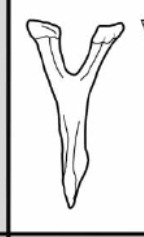
Robust, spatulate, broad-crowned teeth.
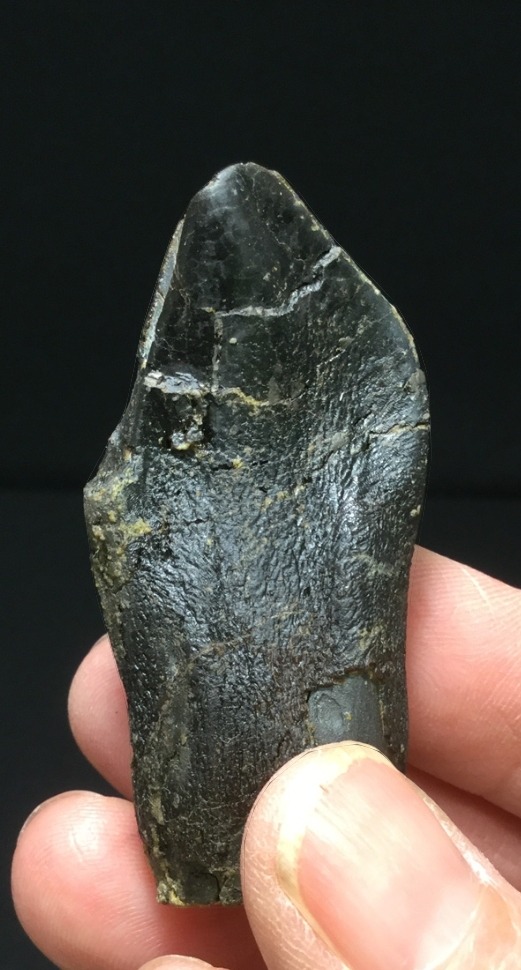
Crests formed by large, protruding nasal.
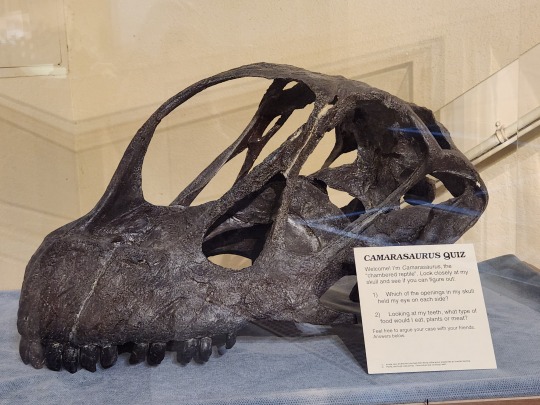
Elongate metacarpals.
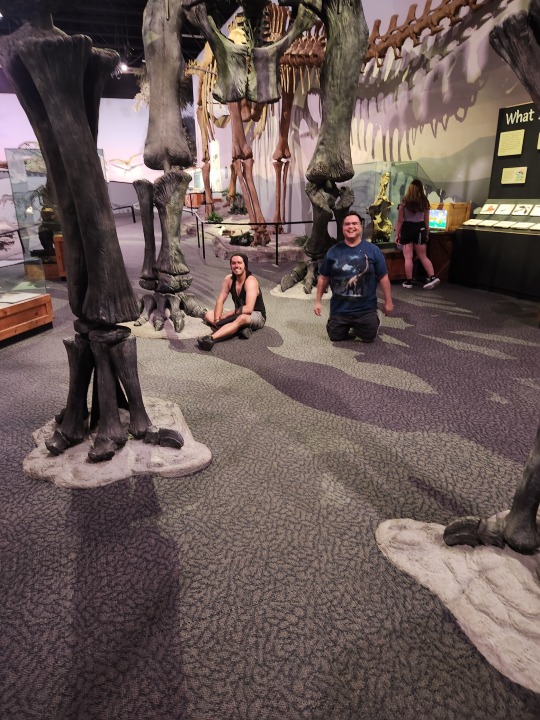
Forelimbs longer than hindlimbs.
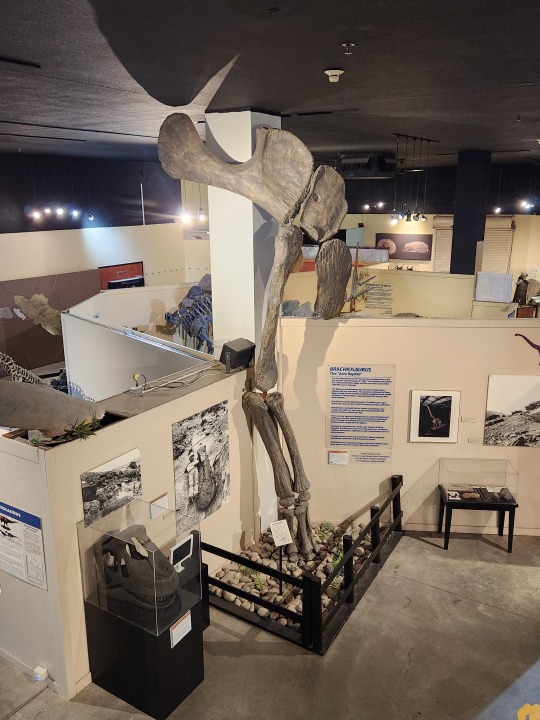
Now here's a list of important or interesting macronarians:
ABROSAURUS
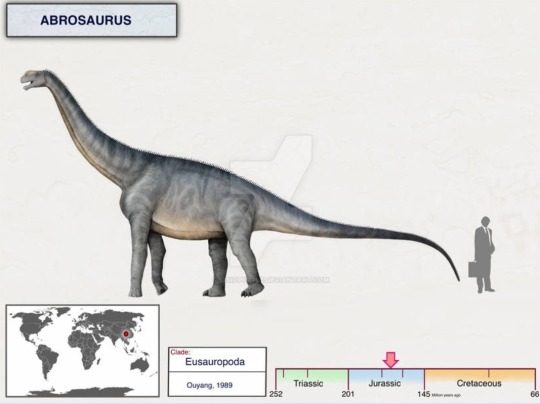
Discovered in 1984 near Zigong, China. It's name means "delicate lizard". It is from the middle Jurassic so one of the earliest in the clade and it is known from a nearly complete skull which is almost unheard of in sauropods.
AUSTRALOTITAN
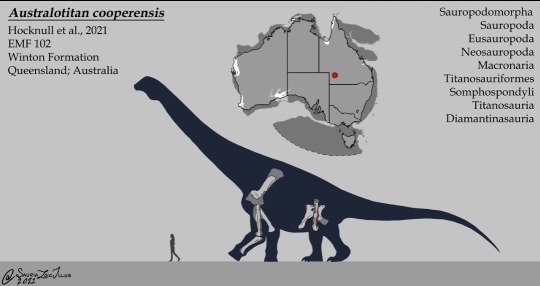
Discovered in 2005 in Queensland, Australia, the "southern giant" is the largest dinosaur found on the island continent.
CAMARASAURUS
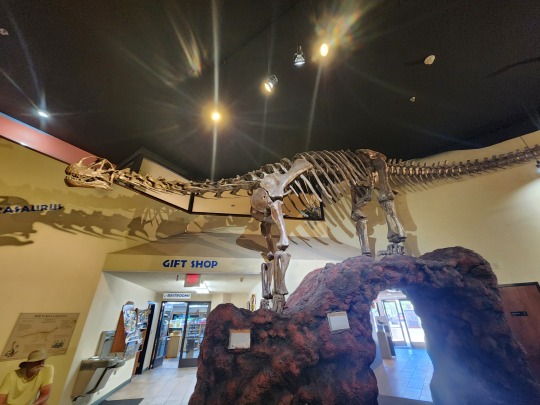
Found during the infamous Bone Wars, it is the most common sauropod in the Morrison Formation. Named in 1877 by Edward Drinker Cope, it means "chambered lizard". The first specimen was recovered from Cañon City, Colorado's Garden Park Quarry. Other specimens have come from Como Bluff, Wyoming; Fruita, Colorado; Dinosaur National Monument, Black Mesa, Oklahoma; South Dakota, New Mexico, and the Snowy Mountains of Montana. Over 500 specimens are known from both juvenile and adult animals. In fact, the most complete sauropod ever found was a juvenile Camarasaurus. You've probably seen it.

There are four species recognized: C. grandis, C. lewisi, C. lentus, and C. supremus. Stratigraphic evidence suggests an evolutionary progression of the genus through the Morrison Formation. C. grandis is the oldest occurring in the lower Salt Wash Member. It coexisted briefly with C. lewisi in the upper Salt Wash and with C. lentus in the lower Brushy Basin Member before vanishing. C. lentus continued till the bottom of the upper Brushy Basin where it briefly overlapped with C. supremus. This immediate succession of species as well as similarities suggests that C. supremus evolved directly from C. lentus.
EUHELOPUS
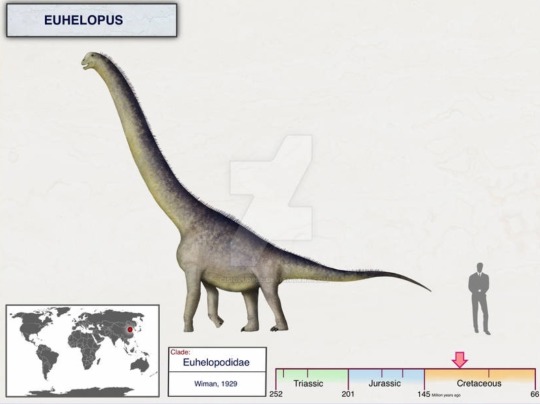
It was discovered in 1913 by a Catholic priest names Father R. Mertens and was the first dinosaur scientifically investigated in China.
FUKUITITAN
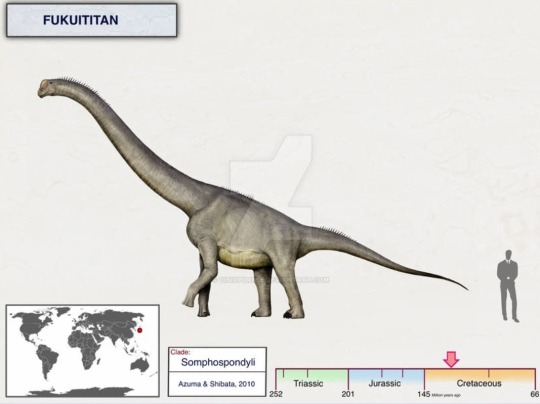
Described in 2010, this titanosaur from Japan is just fun to say.
LOURINHASAURUS

A camarasaurid found in Portugal in 1949. It comes from onw of the Morrison's sister formation, the Lourinha. It is incredibly similar to Camarasaurus with slightly longer front limbs.
VENENOSAURUS
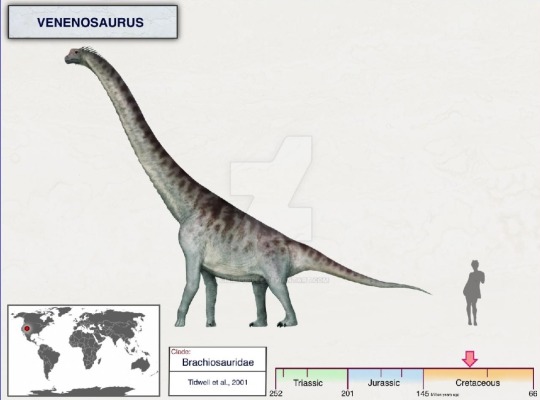
A brachiosaurid from the early Cretaceous Cedar Mountain Formation. An adult and juvenile were found in 1998 in the Poison Strip Member.
ABYDOSAURUS
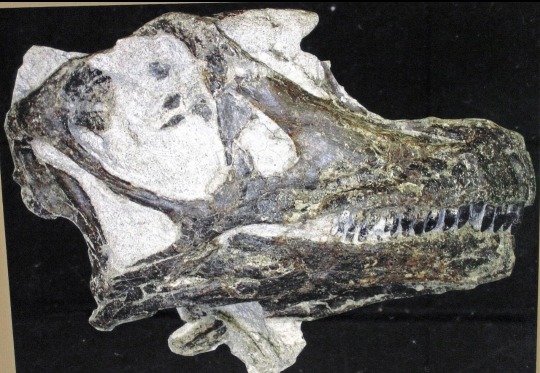
A brachiosaurid known from a complete skull. Found in the Mussentuchit Member of the Cedar Mountain Formation in Dinosaur National Monument, it was very similar to Giraffatitan with narrower teeth and a smaller nose.
BRACHIOSAURUS
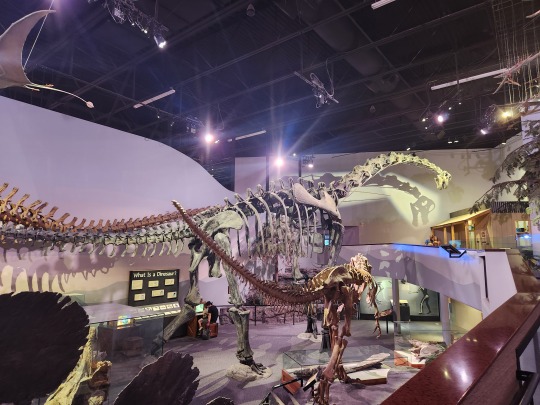
Found during the Bone Wars in 1900 by Elmer Riggs in Fruita, Colorado, it was the largest dinosaur ever found at the time. Despite it's popularity though, very little is actually known about this dinosaur.
CEDAROSAURUS
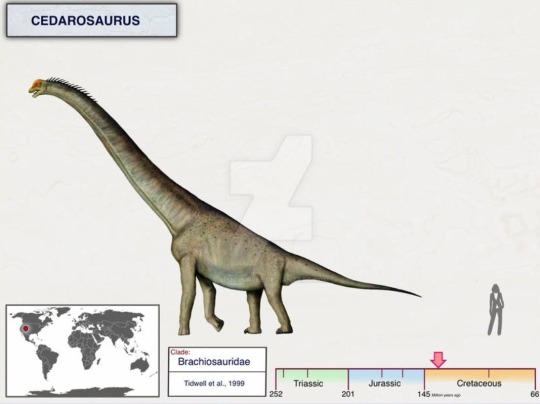
Another brachiosaurid found in the Cedar Mountain Formation but in the Yellow Cat Member. Seems brachiosaurids lasted a bit in North America.
EUROPASAURUS
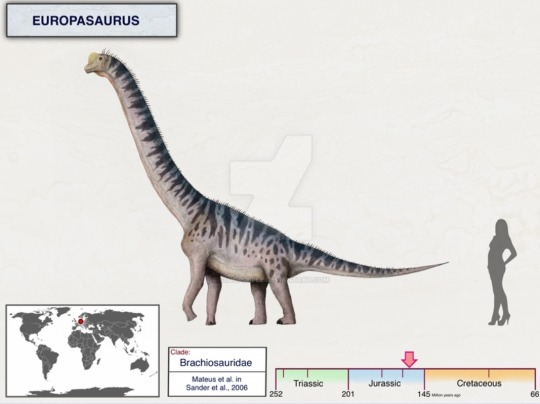
A brachiosaurid from late Jurassic Germany, it was identified as an example of insular dwarfism resulting from isolation on an island. It was only 20ft (6.2m) long!
GIRAFFATITAN
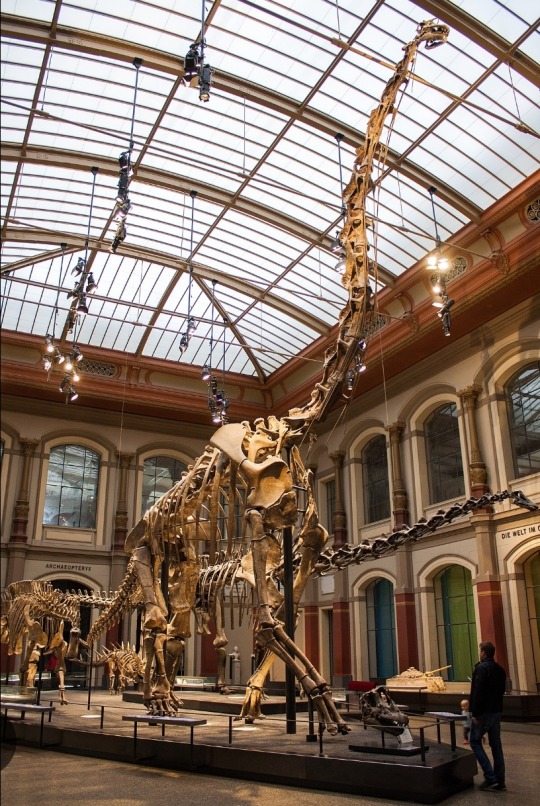
A brachiosaurid from the other Morrison sister formation, the Tendaguru. Once thought to be a species of Brachiosaurus, most reconstructions are actually based on this genus. It is the largest sauropod known from relatively complete material. The mounted specimen in Berlin is actually a subadult at about 73.7ft (22.46m) long and 40ft (12m) tall.
ARGENTINOSAURUS
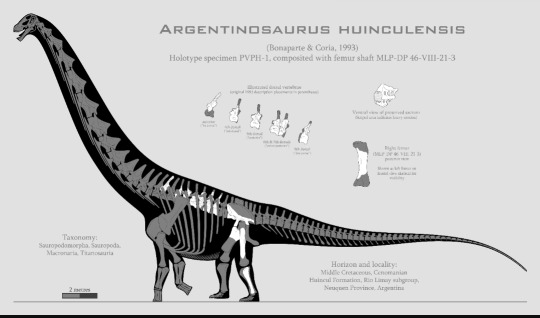
A titanosaur from late Cretaceous Argentina, it is often considered the largest sauropod ever but with so little to go off that really is a bit of a leap. We need more skeletal remains.
ALAMOSAURUS

The only titanosaur found in North America. Remains have been recovered in Texas, Utah, New Mexico, and possibly Wyoming. Despite it's name, it was actually found in New Mexico first. This one is probably kore accurately the largest sauropod as we have more material.
#paleontology#fossils#dinosaur#fun facts#sauropod#Macronaria#brachiosaurus#camarasaurus#giraffatitan#argentinosaurus#alamosaurus
12 notes
·
View notes
Photo

O que é o BAT? Não, não transformamos os cães no Batman. BAT significa "Behaviour Adjustment Training" ou seja treino de ajustamento de comportamento. Ajudamos a treinar o seu cão a ajustar o seu comportamento e lidar com o ambiente e stress da melhor forma. Contacte-nos para mais informações. ❤ #CãesDoOeste #caesdooeste #treinocanino #treinopositivo #caesfelizes #donosfelizes #adestramentocanino #Lourinhã #lourinha #dogtraining #positivedogtraining #happydog #happyowner #barkhappy #cutedogs #dogsforlife #adorablepets #furfriends #dog #dogs #enjoyyourdog (em Cães do Oeste) https://www.instagram.com/p/B91QO5vjP3Y/?igshid=13g2r6get95jd
#cãesdooeste#caesdooeste#treinocanino#treinopositivo#caesfelizes#donosfelizes#adestramentocanino#lourinhã#lourinha#dogtraining#positivedogtraining#happydog#happyowner#barkhappy#cutedogs#dogsforlife#adorablepets#furfriends#dog#dogs#enjoyyourdog
0 notes